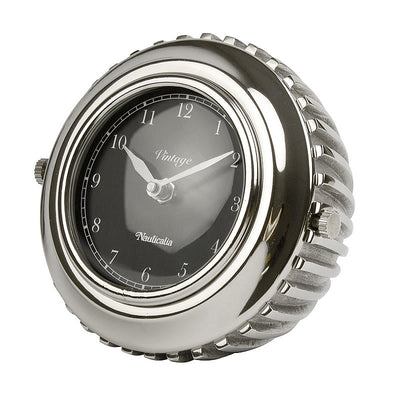Sunstone - the secret to Viking Navigation
Does the Alderney Crystal hold the secret of Viking navigation?
Norse legends about a crystal with mystical powers. It sounds like a New Age fantasy, but recent discoveries suggest that the solarsteinn or sunstone is worth closer examination.
Medieval magic?
Thirteenth century Icelandic manuscripts refer to a stone that was able to locate the precise position of the sun, even in overcast conditions. But then medieval Icelandic manuscripts also refer to trolls and elves, so the sunstone's credibility was open to doubt. Plus, the stones themselves seemed to be highly elusive. While many Norse and Viking artefacts have been uncovered over the years - including several burial ships - sunstones were conspicuous by their absence.
Sailing into the sunset
That was to change with the discovery of the Alderney Crystal. Found in the wreck of an Elizabethan warship at the bottom of the English Channel, it's shed new light on a navigational tool that preceded the compass by several centuries. And the sunstone might also help to explain the Norse navigators remarkable achievements. For centuries maritime exploration had involved sailing along the coastline. The Ancient Greeks (Jason and the Argonauts) the Phoenicians and the Arab traders who sailed as far as the East Indies could do so without losing sight of land. The Vikings had the skill and confidence to sail into the unknown – plus, of course, their solarsteinn.
How sunstones work...
A sunstone is a transparent type of calcite crystal that has optical qualities similar to a polarizing filter. By holding it up to the sky and rotating it slowly, an effect called birefringence can be observed. This splits light beams in such a way that the direction of their source can - with practice - be determined with a high degree of accuracy.
In rain...fog...and snow
Like the Polynesians, the Vikings navigated by the stars at night and the sun during the day. But whereas the South Pacific enjoys a lot of fine sunny weather, the North Atlantic is a different kettle of roll-mops. A 'ceiling' of uniform, overcast grey is common for days on end and then there are the snow storms. In a blizzard at sea you can tell whether it's day or night, but that's about all. However researchers now believe that with a sunstone it would be possible - and fairly straightforward - to pin-point the position of the sun to within 1 degree, in more or less any weather conditions. What's more, it works no matter how low the sun is in the sky, even when it drops below the horizon. Invaluable during the almost nightless days of an arctic summer.
Tried and trusted
Which explains why a sunstone was carried - and presumably used - on a ship that sank in 1592. Because although compasses had been known about for some 300 years in the West, their accuracy was often in doubt. A large mass of iron or steel - a cannon, for example - in close proximity could render an early compass practically useless. A 90° margin of error was not unusual!
And laboratory tested
Unfortunately the Alderney Crystal is unusable. No longer transparent, it's surface has been clouded by salt corrosion. But an identical piece of Icelandic calcite has been tried under laboratory conditions with impressive results. Presumably, the next stage is a series of sea trials. Then perhaps we'll have a better understanding as to how those early Norse mariners crossed the Atlantic.
Nearly 500 years before Columbus
Now there are legends that some time in the Celtic twilight - around the sixth or seventh centuries - an Irish monk landed in America. To be sure, Ireland is a land of Saints and miracles but you'd need a particularly close relationship with the Almighty to make it across the Atlantic in a coracle. So while not saying it isn't true - it is rather unlikely.
What is accepted is that Leif Ericsson landed in Vin Land - what is now Newfoundland - in 1003. Pipping Columbus to the post by 489 years. The Santa Maria, if not the Nina and Pinta, would have been equipped with a compass. I wonder if Eric had a sunstone?




